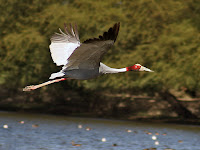Hello again, welcome back to animals under threat. Today,
we will be covering a rat species that is endemic to North Queensland and has
become under the category of near threatened. Please welcome the Pygmy
white-tailed rat (Uromys hadrourus).
The Pygmy white-tailed rat is a species of rat that
belongs to the Muridae family and is
less known than its sister species, the more common Giant white-tailed rat (Uromys caudimaculatus). Discovered at Thorntons
Peak in 1973, little is known about this species apart from the brown colour fur
back, white fur on its chest and hairless mosaic tail (Woinarski &
Burbidge, 2016).
Picture by Mike
Trennery.
As
little is known about the preferred habitat of the Pygmy white-tailed rat, some
scientists believe this species prefers rainforests with large ferns and vine
trees (Moore, 2010). They are known to eat rainforest fruits and insects with
their favourite insect been large beetles (Department of Environment and Science,
2017-2019).
Photo (right) by
Mark Sanders and photo (left) by Nathan Litjens.
The major threats to this species are deforestation and
introduced predators and pests. Cane toads are a threat due to the Pygmy
white-tailed rat competing for beetles and biting the toad causes the rat to
become poisoned. Feral cats and dogs hunt Pygmy white-tailed rat for food and
destroy possible nesting sites. Deforestation of needed plants that provide the
food of the rat are been removed for urban and agriculture uses (wettropics,
1998).
Next time, we will be covering a species of giraffe that
is under threat in Africa.
References
Moore, L.A. 2010, Niche differentiation, rarity, and
commonness in the sympatric Australian white-tailed rats: Uromys caudimaculatus
and Uromys hadrourus.
The State of Queensland (Department of Environment and
Science) 2017–2019, https://parks.des.qld.gov.au/parks/mount-lewis/culture.html
retrieved on 29/05/19
Woinarski, J. & Burbidge, A.A. 2016. Uromys
hadrourus. The IUCN Red List of Threatened Species 2016: e.T22802A22446971.
http://dx.doi.org/10.2305/IUCN.UK.20161.RLTS.T22802A22446971.en
Picture references
google images




























